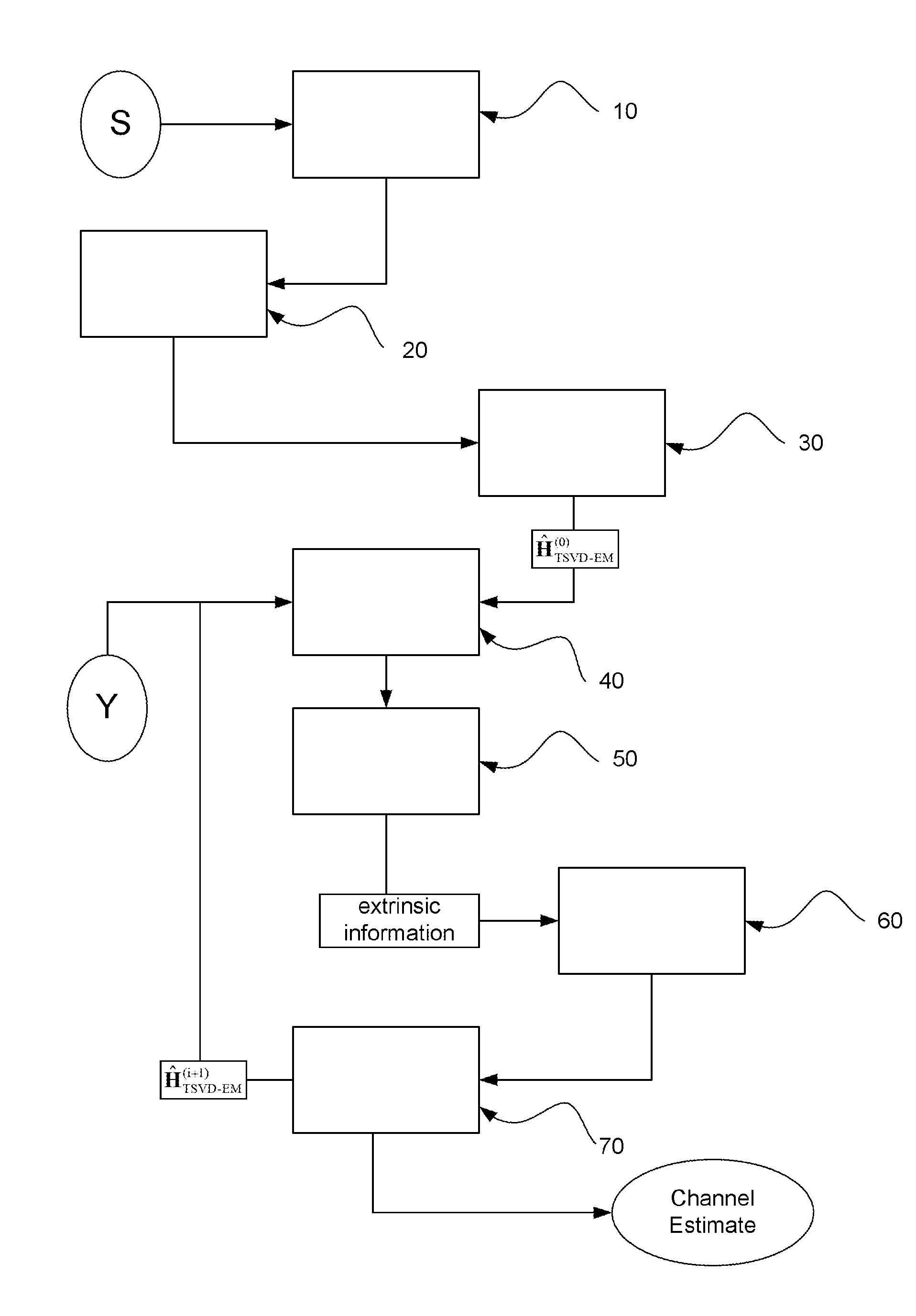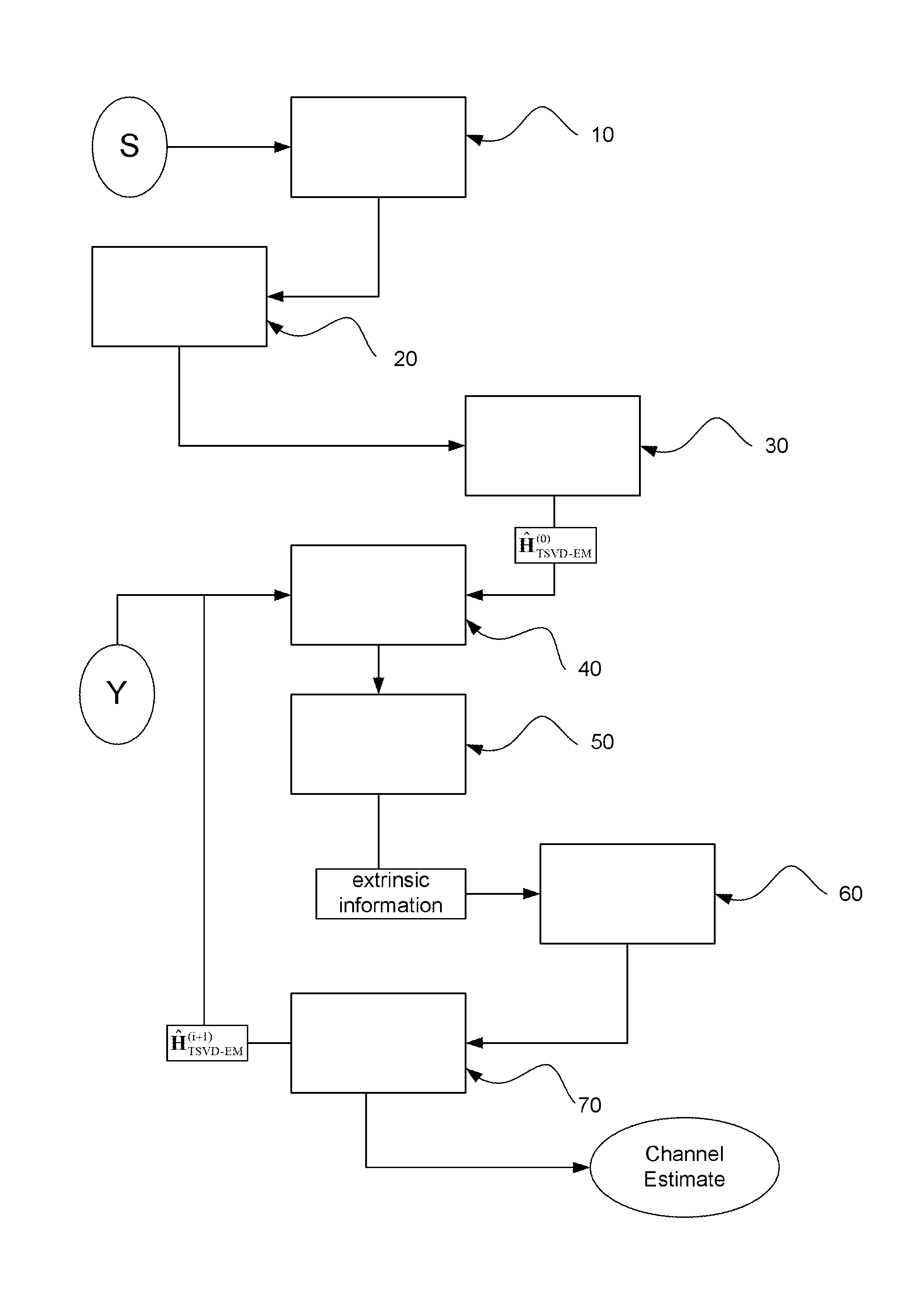Channel estimation method
a channel estimation and channel estimation technology, applied in the field of data reception techniques and transmission techniques, can solve the problems of serious impact on the iterative mechanism, inability to provide sufficiently accurate channel estimations by iterative channel estimators, and non-negligent complexity, so as to improve channel estimation, reduce calculations, and facilitate calculation
- Summary
- Abstract
- Description
- Claims
- Application Information
AI Technical Summary
Benefits of technology
Problems solved by technology
Method used
Image
Examples
Embodiment Construction
1. General Principles of an Exemplary Aspect of the Disclosure
[0052]The base idea of an aspect of the disclosure is to make the EM channel estimation method more usable in practical specifications. Thus, in order to make the EM channel estimation method more practical, some simplified EM channel estimation method may be considered by keeping almost the same performance.
[0053]Such a simplified EM channel estimation method, as proposed by the inventors, ensures that the “null” subcarriers which are inserted at both sides of the bandwidth of an OFDM symbol will not lead to a divergence of the EM channel estimation method. This simplified EM channel estimation method also ensures that the complexity of channel estimation is reduced.
[0054]For realizing this simplification, the inventors propose a method for arbitrary eliminating the matrix inversion of the traditional EM channel estimation method. Such an elimination leads to a reduction of the number of calculation made and consequently...
PUM
 Login to View More
Login to View More Abstract
Description
Claims
Application Information
 Login to View More
Login to View More - R&D
- Intellectual Property
- Life Sciences
- Materials
- Tech Scout
- Unparalleled Data Quality
- Higher Quality Content
- 60% Fewer Hallucinations
Browse by: Latest US Patents, China's latest patents, Technical Efficacy Thesaurus, Application Domain, Technology Topic, Popular Technical Reports.
© 2025 PatSnap. All rights reserved.Legal|Privacy policy|Modern Slavery Act Transparency Statement|Sitemap|About US| Contact US: help@patsnap.com



